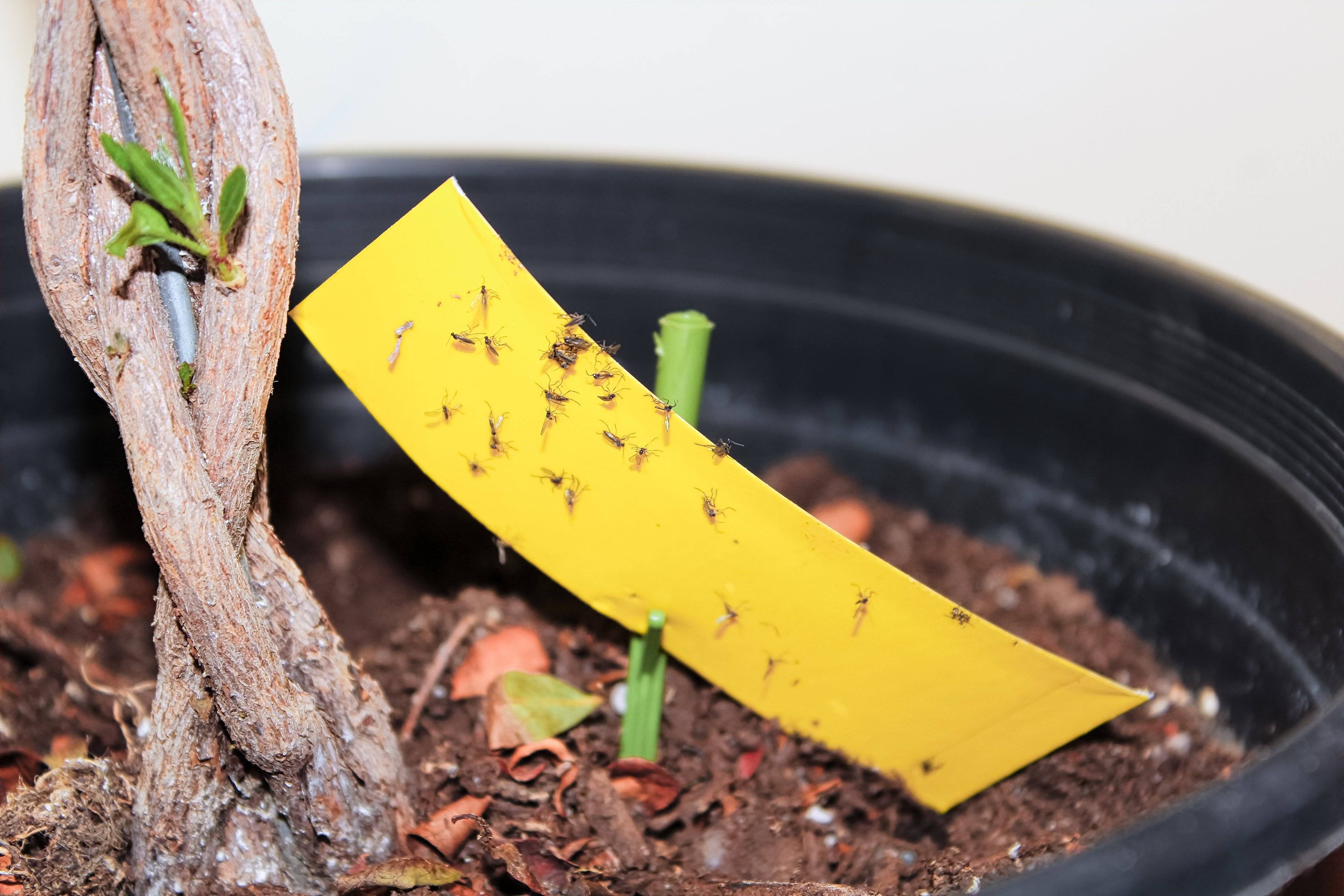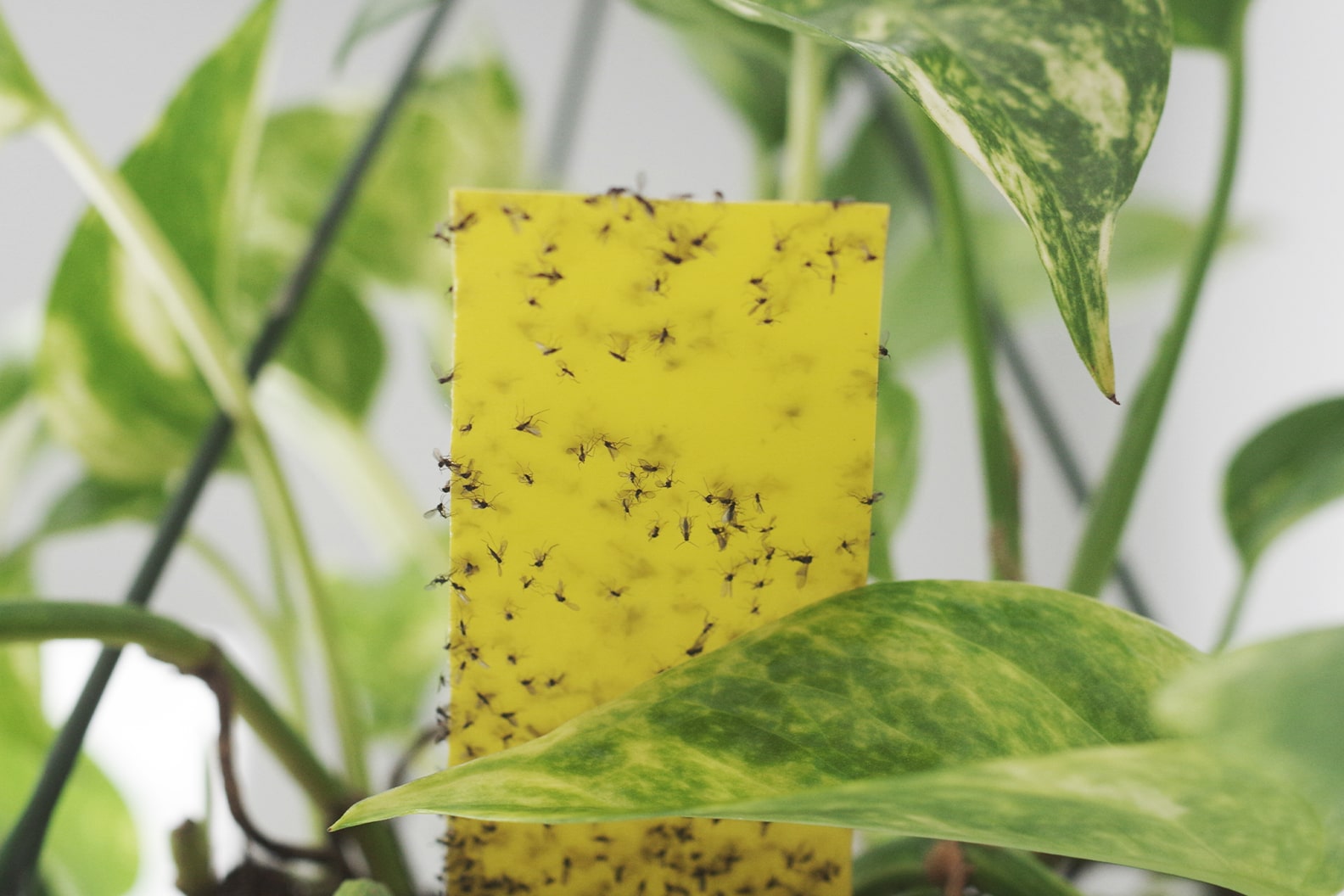Fungus gnats, those tiny, pesky flies that seem to appear out of nowhere, can quickly become a frustrating problem for indoor plant enthusiasts. These minuscule creatures, often mistaken for fruit flies, can wreak havoc on your beloved houseplants. In this comprehensive guide, we’ll delve into the world of fungus gnats, exploring their life cycle, the damage they cause, and effective strategies for prevention and control.
Fungus gnats are small, dark flies that typically measure around 1/8 of an inch in length. They are attracted to moist, organic matter, making houseplants with consistently damp soil an ideal breeding ground. The life cycle of a fungus gnat consists of four stages:
Egg

Adult female gnats lay their eggs in moist soil, often near the surface. These eggs are tiny and white, and they hatch within a few days.
Larva
The larvae, also known as maggots, are small, white, legless creatures that feed on fungi, algae, and decaying plant matter in the soil. They are the primary culprits behind the damage caused to plant roots.
Pupa
After feeding for about two weeks, the larvae pupate, forming a dark, hardened case. This pupal stage lasts for several days.
Adult
The adult gnats emerge from the pupal cases and begin the cycle anew, laying eggs and producing more larvae.

While adult fungus gnats are relatively harmless, their larvae can cause significant damage to plant roots. The larvae feed on delicate root hairs, hindering the plant’s ability to absorb water and nutrients. This can lead to stunted growth, yellowing leaves, and even plant death in severe cases.
Prevention is always better than cure. Here are some effective strategies to prevent fungus gnat infestations:
Allow Soil to Dry Between Waterings

One of the most crucial steps in preventing fungus gnat infestations is to allow the top inch or two of soil to dry out between waterings. While it’s important to keep your plants adequately hydrated, overwatering creates the ideal breeding ground for fungus gnats.
Use Well-Draining Potting Mix
A well-draining potting mix allows excess water to drain quickly, reducing the risk of soggy soil. Avoid heavy, clay-based soils that retain moisture for extended periods.
Avoid Over-Fertilizing
Excessive fertilization can contribute to fungus gnat problems. Overfertilized soil can become a nutrient-rich breeding ground for these pests.
Use Yellow Sticky Traps
Yellow sticky traps are an effective way to monitor and control adult fungus gnats. The bright yellow color attracts the gnats, and the sticky surface traps them.

If you find yourself dealing with a fungus gnat infestation, there are several effective control methods to consider:
Beneficial Nematodes
Beneficial nematodes are microscopic worms that prey on fungus gnat larvae. They are a natural and environmentally friendly way to control these pests. Simply water the soil with a solution containing beneficial nematodes, and they will seek out and destroy the larvae.
Insecticidal Soaps
Insecticidal soaps can be used to control adult fungus gnats. However, it’s important to note that they are not effective against the larvae.
Hydrogen Peroxide Treatment

A diluted hydrogen peroxide solution can be applied to the soil surface to kill fungus gnat larvae. Be cautious not to overapply, as hydrogen peroxide can also harm plant roots.
Diatomaceous Earth
Diatomaceous earth is a natural, non-toxic powder made from fossilized diatoms. It can be sprinkled on the soil surface to kill fungus gnat larvae.
While fungus gnats can be a nuisance, they can be effectively managed with proper prevention and control techniques. By following the tips outlined in this guide, you can protect your houseplants from these pesky pests and enjoy healthy, thriving indoor gardens.
Fungus Gnats Plant
